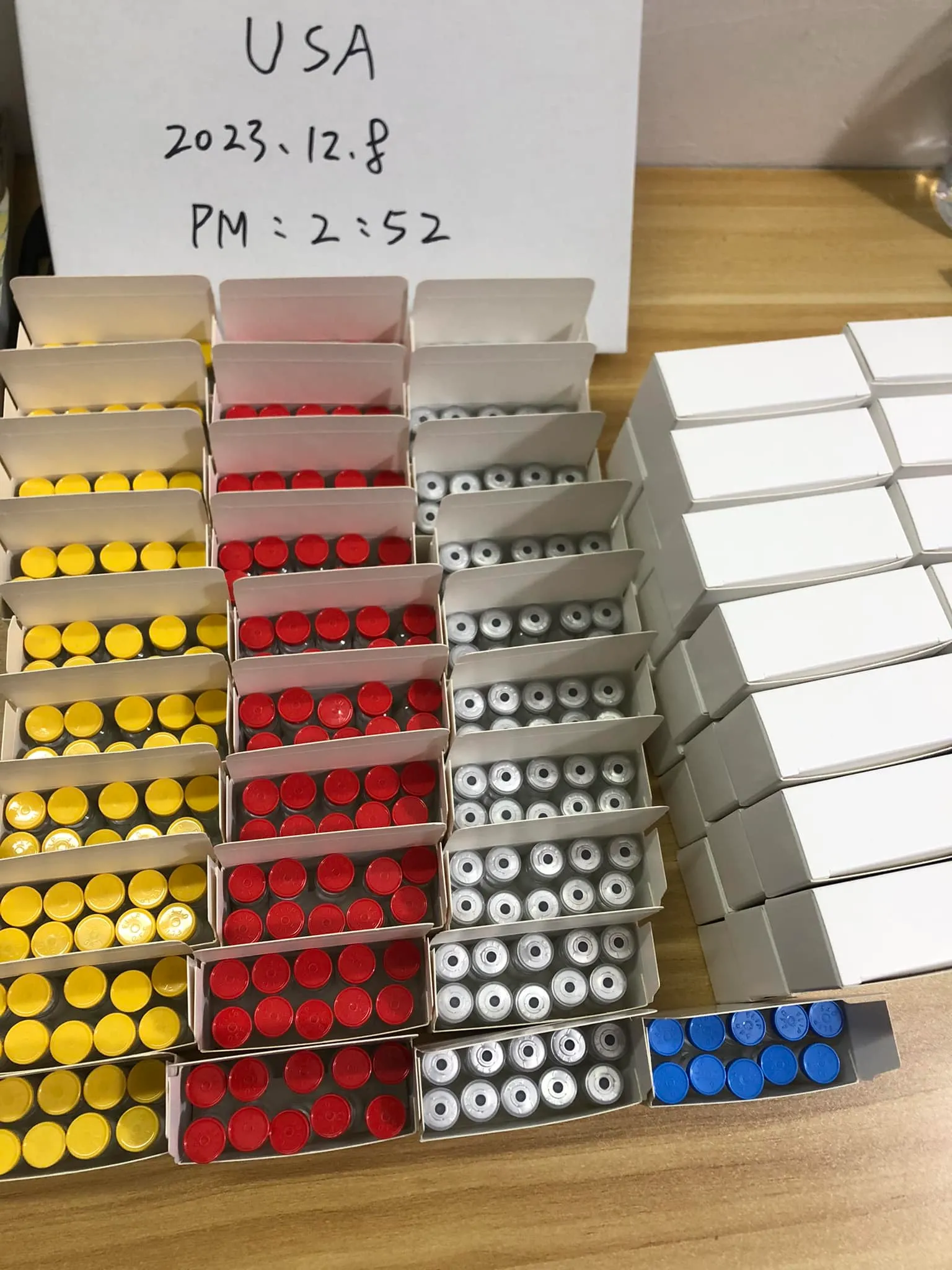
News
Jun . 28, 2024 01:30 Back to list
Kisspeptin vs HCG A Comparative Study
Kisspeptin vs. hCG A Comparative Study
Introduction
Kisspeptin and human chorionic gonadotropin (hCG) are two key players in the regulation of fertility and reproductive processes. While both hormones play crucial roles in the menstrual cycle and pregnancy, they differ significantly in their structure, function, and mechanism of action. In this article, we will delve into the similarities and differences between kisspeptin and hCG, providing a comprehensive comparison of these two hormones.
Similarities
1. Reproductive Function Both kisspeptin and hCG are involved in regulating fertility and reproductive processes. They act on the hypothalamus and pituitary gland to regulate the release of gonadotropins, which in turn stimulate the production of sex hormones like estrogen and progesterone.
2. Expression Patterns Kisspeptin and hCG are expressed in various tissues throughout the body, with highest levels found in the hypothalamus and placenta, respectively. Their expression is regulated by a complex network of factors, including sex steroids, GnRH, and other hormones.
Differences
1. Structure and Function Kisspeptin is a small peptide hormone that acts as a potent stimulator of GnRH secretion. It plays a critical role in the activation of the hypothalamic-pituitary-gonadal (HPG) axis, which regulates reproductive functions such as puberty, ovulation, and fertility. On the other hand, hCG is a glycoprotein hormone that is produced by the syncytiotrophoblast cells of the placenta. Its primary function is to maintain the viability of the corpus luteum, which produces progesterone necessary for early pregnancy Its primary function is to maintain the viability of the corpus luteum, which produces progesterone necessary for early pregnancy Its primary function is to maintain the viability of the corpus luteum, which produces progesterone necessary for early pregnancy Its primary function is to maintain the viability of the corpus luteum, which produces progesterone necessary for early pregnancy
Its primary function is to maintain the viability of the corpus luteum, which produces progesterone necessary for early pregnancy Its primary function is to maintain the viability of the corpus luteum, which produces progesterone necessary for early pregnancy kisspeptin 10 vs hcg.
2. Mechanism of Action Kisspeptin exerts its effects by binding to G protein-coupled receptors (GPCRs) called kisspeptin receptors (KISS1R or GPR54). Activation of KISS1R leads to the release of GnRH, which in turn stimulates the release of LH and FSH from the pituitary gland. In contrast, hCG binds to its receptor, LHR, which is also a GPCR. However, hCG's actions are more diverse, including the stimulation of steroidogenesis in the corpus luteum, the inhibition of apoptosis in trophoblast cells, and the maintenance of pregnancy by preventing uterine contractions.
3. Clinical Applications Kisspeptin has emerged as a potential therapeutic target for the treatment of reproductive disorders such as infertility and delayed puberty. Studies have shown that kisspeptin agonists can stimulate ovulation and improve fertility in women with polycystic ovarian syndrome (PCOS). In addition, kisspeptin may also have applications in the diagnosis and monitoring of pregnancy, as its levels increase during early pregnancy. hCG, on the other hand, is widely used in clinical practice for the diagnosis of pregnancy, the management of ectopic pregnancy, and the support of early pregnancy in women with fertility issues.
Conclusion
In conclusion, kisspeptin and hCG are two important hormones that play critical roles in reproductive physiology. While they share some similarities in their function and expression patterns, they differ significantly in their structure, mechanism of action, and clinical applications. Understanding the differences between these two hormones is essential for the development of effective therapies and diagnostic tools for reproductive disorders.
kisspeptin 10 vs hcg.
2. Mechanism of Action Kisspeptin exerts its effects by binding to G protein-coupled receptors (GPCRs) called kisspeptin receptors (KISS1R or GPR54). Activation of KISS1R leads to the release of GnRH, which in turn stimulates the release of LH and FSH from the pituitary gland. In contrast, hCG binds to its receptor, LHR, which is also a GPCR. However, hCG's actions are more diverse, including the stimulation of steroidogenesis in the corpus luteum, the inhibition of apoptosis in trophoblast cells, and the maintenance of pregnancy by preventing uterine contractions.
3. Clinical Applications Kisspeptin has emerged as a potential therapeutic target for the treatment of reproductive disorders such as infertility and delayed puberty. Studies have shown that kisspeptin agonists can stimulate ovulation and improve fertility in women with polycystic ovarian syndrome (PCOS). In addition, kisspeptin may also have applications in the diagnosis and monitoring of pregnancy, as its levels increase during early pregnancy. hCG, on the other hand, is widely used in clinical practice for the diagnosis of pregnancy, the management of ectopic pregnancy, and the support of early pregnancy in women with fertility issues.
Conclusion
In conclusion, kisspeptin and hCG are two important hormones that play critical roles in reproductive physiology. While they share some similarities in their function and expression patterns, they differ significantly in their structure, mechanism of action, and clinical applications. Understanding the differences between these two hormones is essential for the development of effective therapies and diagnostic tools for reproductive disorders.
 Its primary function is to maintain the viability of the corpus luteum, which produces progesterone necessary for early pregnancy Its primary function is to maintain the viability of the corpus luteum, which produces progesterone necessary for early pregnancy
Its primary function is to maintain the viability of the corpus luteum, which produces progesterone necessary for early pregnancy Its primary function is to maintain the viability of the corpus luteum, which produces progesterone necessary for early pregnancy kisspeptin 10 vs hcg.
2. Mechanism of Action Kisspeptin exerts its effects by binding to G protein-coupled receptors (GPCRs) called kisspeptin receptors (KISS1R or GPR54). Activation of KISS1R leads to the release of GnRH, which in turn stimulates the release of LH and FSH from the pituitary gland. In contrast, hCG binds to its receptor, LHR, which is also a GPCR. However, hCG's actions are more diverse, including the stimulation of steroidogenesis in the corpus luteum, the inhibition of apoptosis in trophoblast cells, and the maintenance of pregnancy by preventing uterine contractions.
3. Clinical Applications Kisspeptin has emerged as a potential therapeutic target for the treatment of reproductive disorders such as infertility and delayed puberty. Studies have shown that kisspeptin agonists can stimulate ovulation and improve fertility in women with polycystic ovarian syndrome (PCOS). In addition, kisspeptin may also have applications in the diagnosis and monitoring of pregnancy, as its levels increase during early pregnancy. hCG, on the other hand, is widely used in clinical practice for the diagnosis of pregnancy, the management of ectopic pregnancy, and the support of early pregnancy in women with fertility issues.
Conclusion
In conclusion, kisspeptin and hCG are two important hormones that play critical roles in reproductive physiology. While they share some similarities in their function and expression patterns, they differ significantly in their structure, mechanism of action, and clinical applications. Understanding the differences between these two hormones is essential for the development of effective therapies and diagnostic tools for reproductive disorders.
kisspeptin 10 vs hcg.
2. Mechanism of Action Kisspeptin exerts its effects by binding to G protein-coupled receptors (GPCRs) called kisspeptin receptors (KISS1R or GPR54). Activation of KISS1R leads to the release of GnRH, which in turn stimulates the release of LH and FSH from the pituitary gland. In contrast, hCG binds to its receptor, LHR, which is also a GPCR. However, hCG's actions are more diverse, including the stimulation of steroidogenesis in the corpus luteum, the inhibition of apoptosis in trophoblast cells, and the maintenance of pregnancy by preventing uterine contractions.
3. Clinical Applications Kisspeptin has emerged as a potential therapeutic target for the treatment of reproductive disorders such as infertility and delayed puberty. Studies have shown that kisspeptin agonists can stimulate ovulation and improve fertility in women with polycystic ovarian syndrome (PCOS). In addition, kisspeptin may also have applications in the diagnosis and monitoring of pregnancy, as its levels increase during early pregnancy. hCG, on the other hand, is widely used in clinical practice for the diagnosis of pregnancy, the management of ectopic pregnancy, and the support of early pregnancy in women with fertility issues.
Conclusion
In conclusion, kisspeptin and hCG are two important hormones that play critical roles in reproductive physiology. While they share some similarities in their function and expression patterns, they differ significantly in their structure, mechanism of action, and clinical applications. Understanding the differences between these two hormones is essential for the development of effective therapies and diagnostic tools for reproductive disorders. Share
Latest news
-
Using tadalafil to promote hair growth and combat hair loss effectively.
NewsJul.10,2024
-
Generating a title similar to palmitoyl oligopeptide could be Oligopeptide containing palmitoyl for skincare benefits and rejuvenation.
NewsJul.10,2024
-
Similarity of the compound tra% 100mg/ml in different pharmaceutical formulations
NewsJul.10,2024
-
Negative impacts of tadalafil on health and well-being
NewsJul.10,2024
-
Anastrozole 0.5 mg twice per week for treatment of cancer patients
NewsJul.10,2024
-
Reviewing the effectiveness of kisspeptin in enhancing reproductive health and fertility.
NewsJul.10,2024
